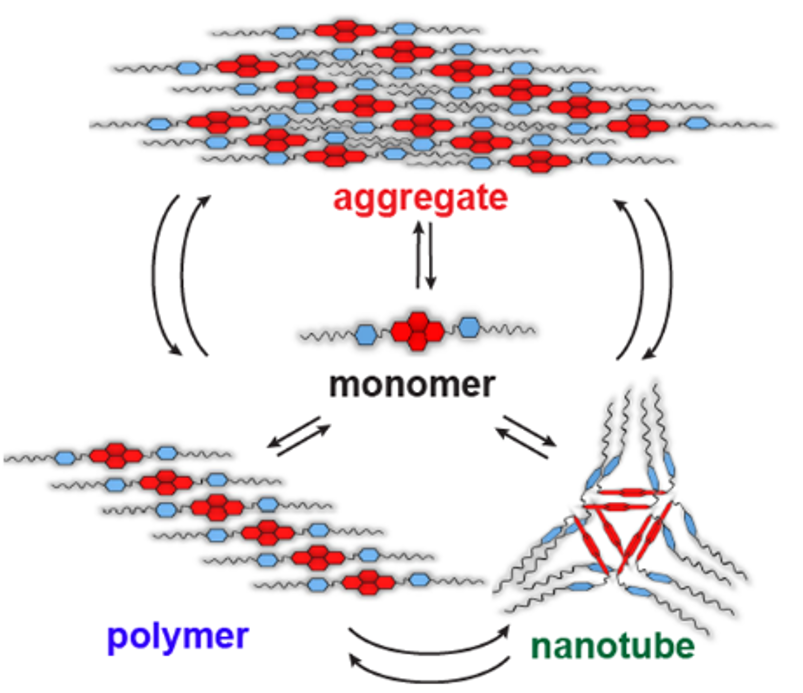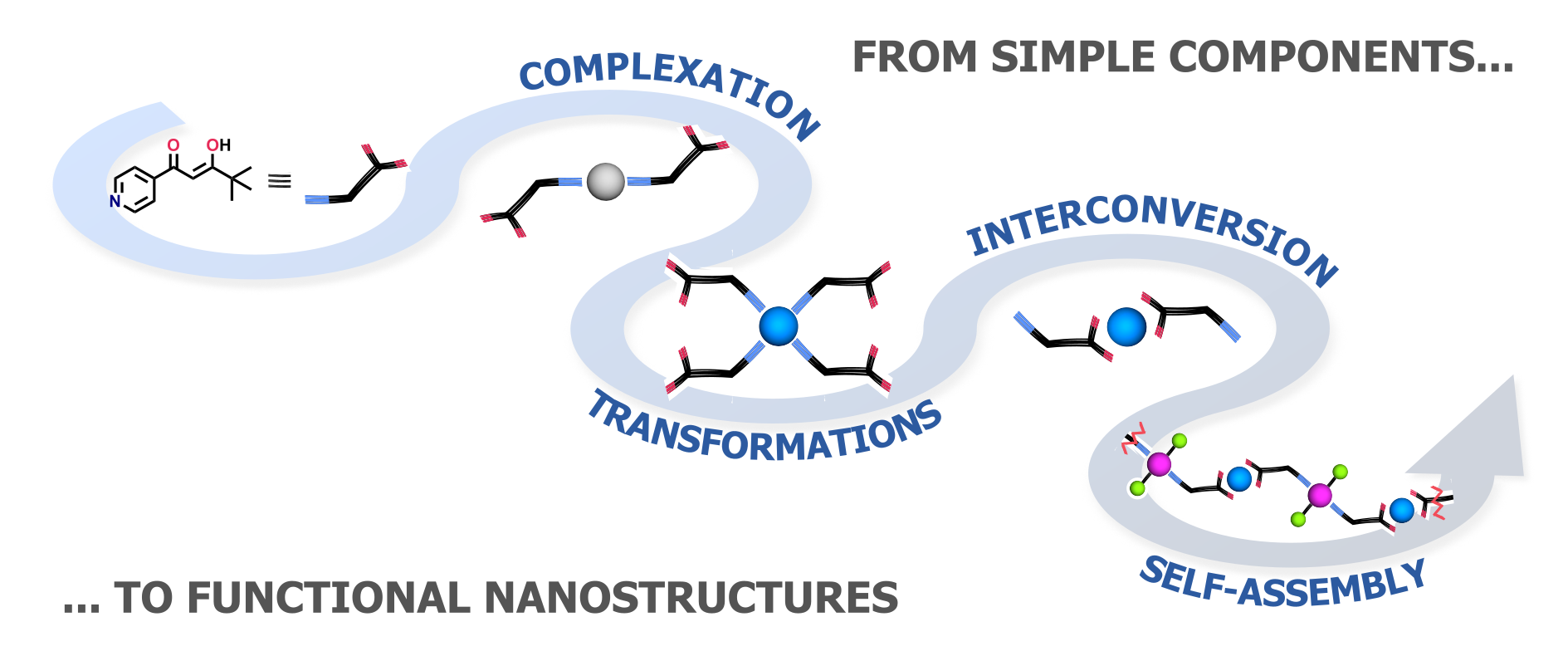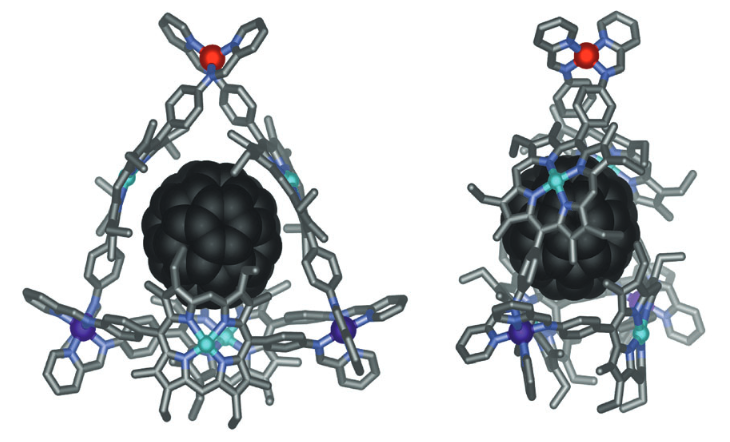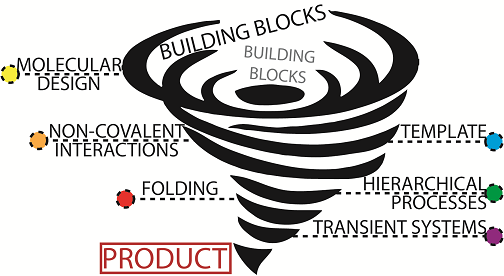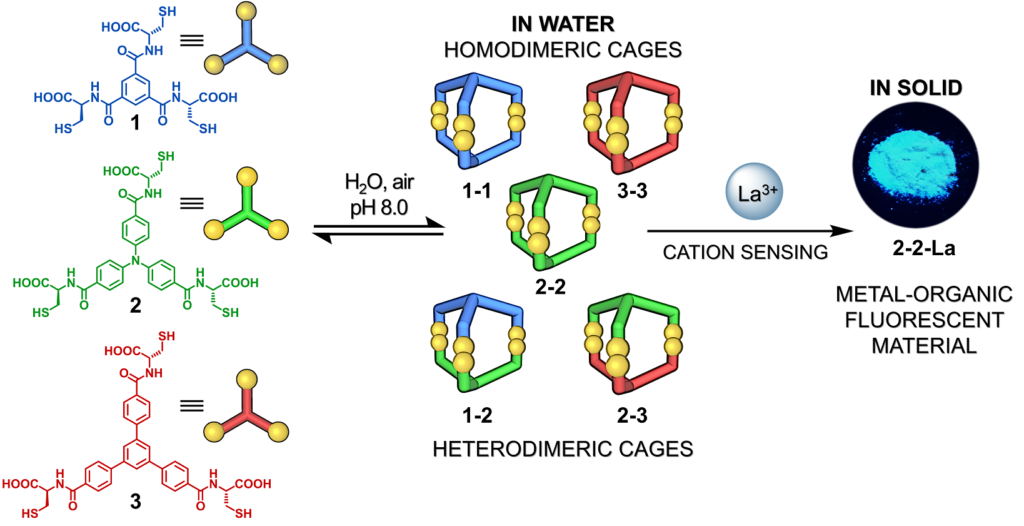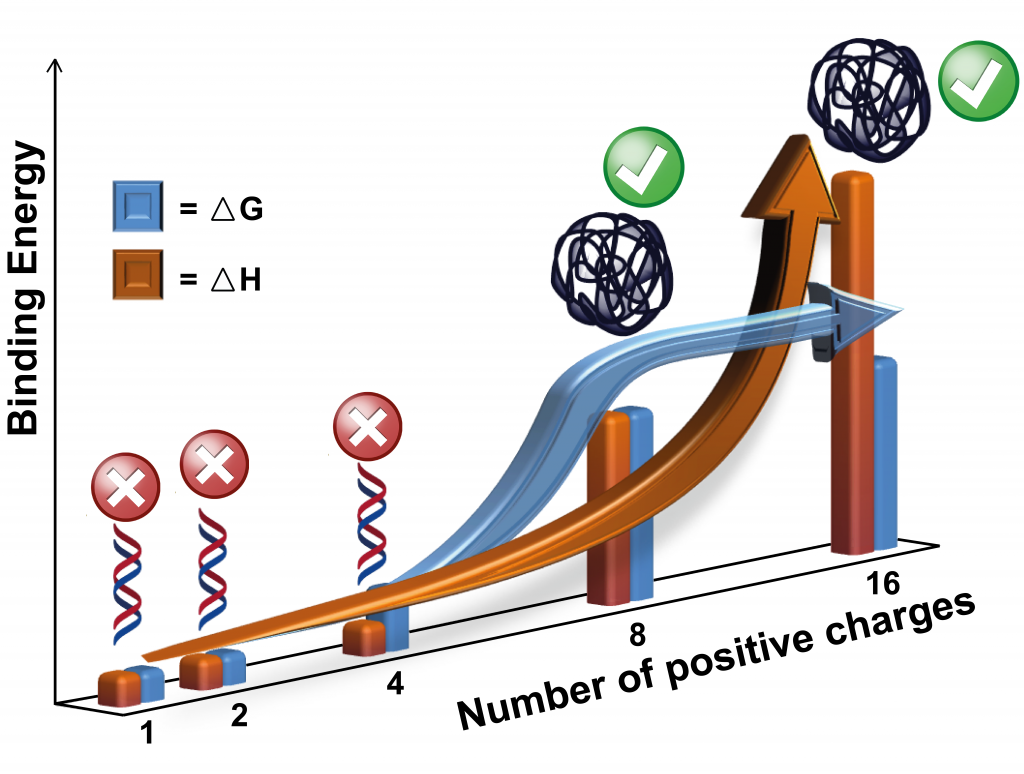Research
1) Non-covalent self-assembly
Noncovalent self-assembly creates an effective route to highly sophisticated supramolecular capsules and polymers with tunable properties. However, the outcome of this assembly process is highly dependent on external conditions, i.e. temperature, concentration, solvent polarity, and others. The overall goal of our research is to understand, control and utilize molecular recognition, self-assembly and host:guest equilibria to create functional and complex nanostructures via the strategic application of dynamic non-covalent interactions, operating either under thermodynamic or kinetic control.
2) Functional Metallosupramolecular Nanostrucutures
The controlled generation of specific metallosupramolecular architectures rests on the design of ligands incorporating suitable binding subunits and the implementation of metal ions presenting coordination features required for the correct reading of the structural information of the ligand. In our laboratory we are developing 2D and 3D metallosupramolecular architectures using imine, hydrazone and diketonate ligands together with d– and f-block metal ions. Our main target is to obtain functional multimetallic architectures which could be potentially used in the field of nanotechnology and catalysis.
3) Dynamic Combinatorial Chemistry (DCC)
DCC deals with chemical systems under rapidly attained thermodynamic equilibrium and was developed independently in the early 90s by the research groups of Professor Jeremy Sanders and Professor Jean-Marie Lehn. Combinatorial chemistry under thermodynamic control leads to the generation of so-called Dynamic Combinatorial Libraries (DCLs) of interconverting species whose composition is adaptable and can be systematically altered by the application of environmental stimuli or chemical “templates”. In DCC reversible covalent bonds and non-covalent interactions are employed, which under appropriate conditions are capable of breakage and reformation. In our laboratory, we are using mainly dynamic disulfide, hydrazone, imine and boronic ester linkages for the creation of adaptable materials and functional nanostructures of interesting structural and topological properties. We are mainly focused on the generation of dynamic macrocyclic, linear and cage-like receptors using a combinatorial approach and investigation of their physicochemical and complexation properties.

